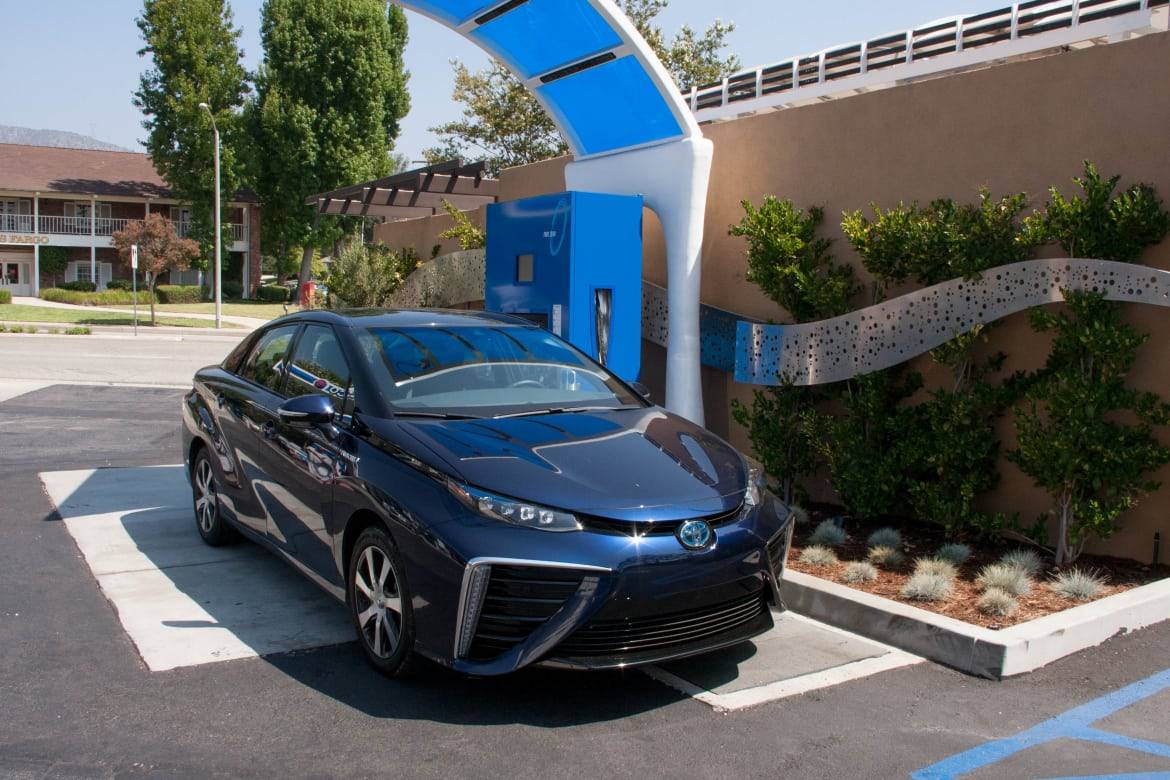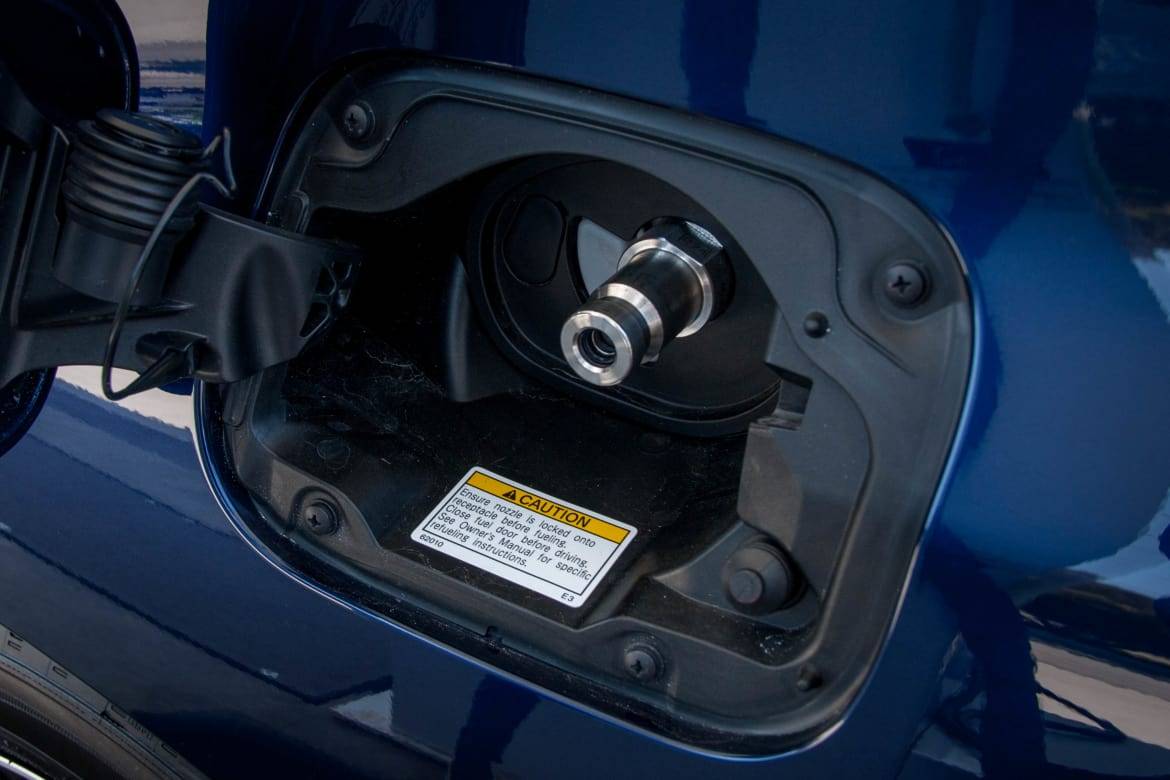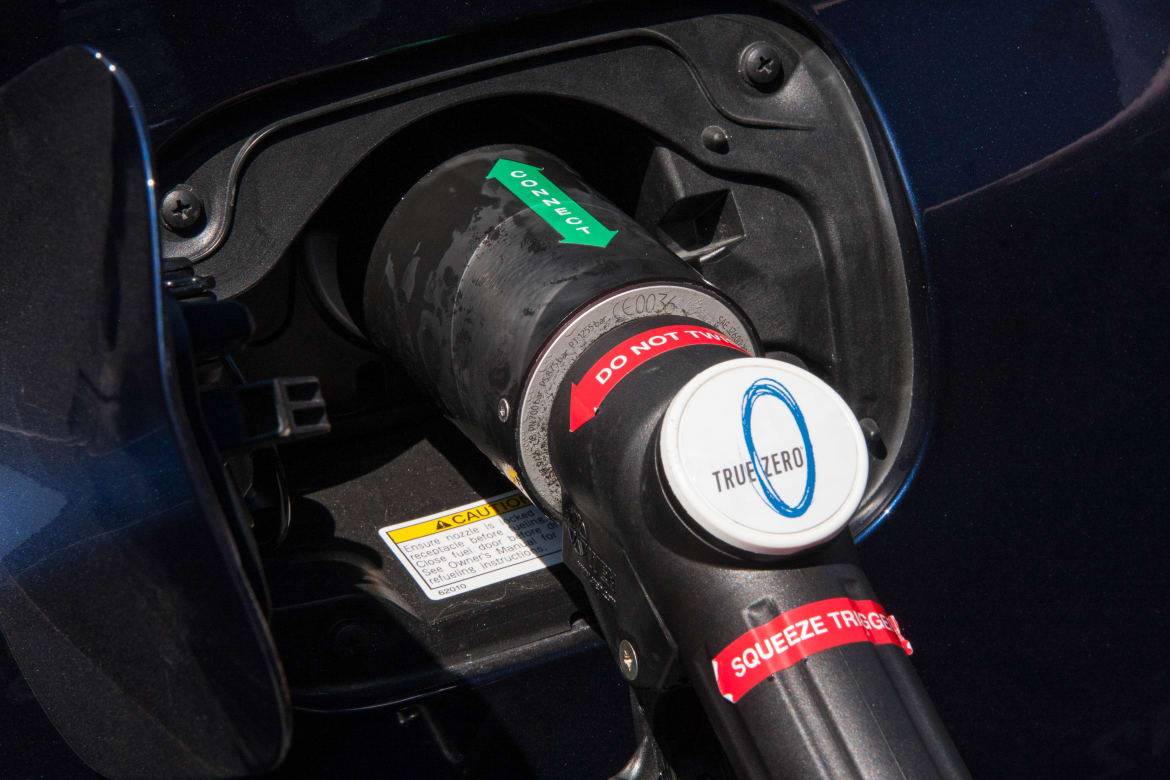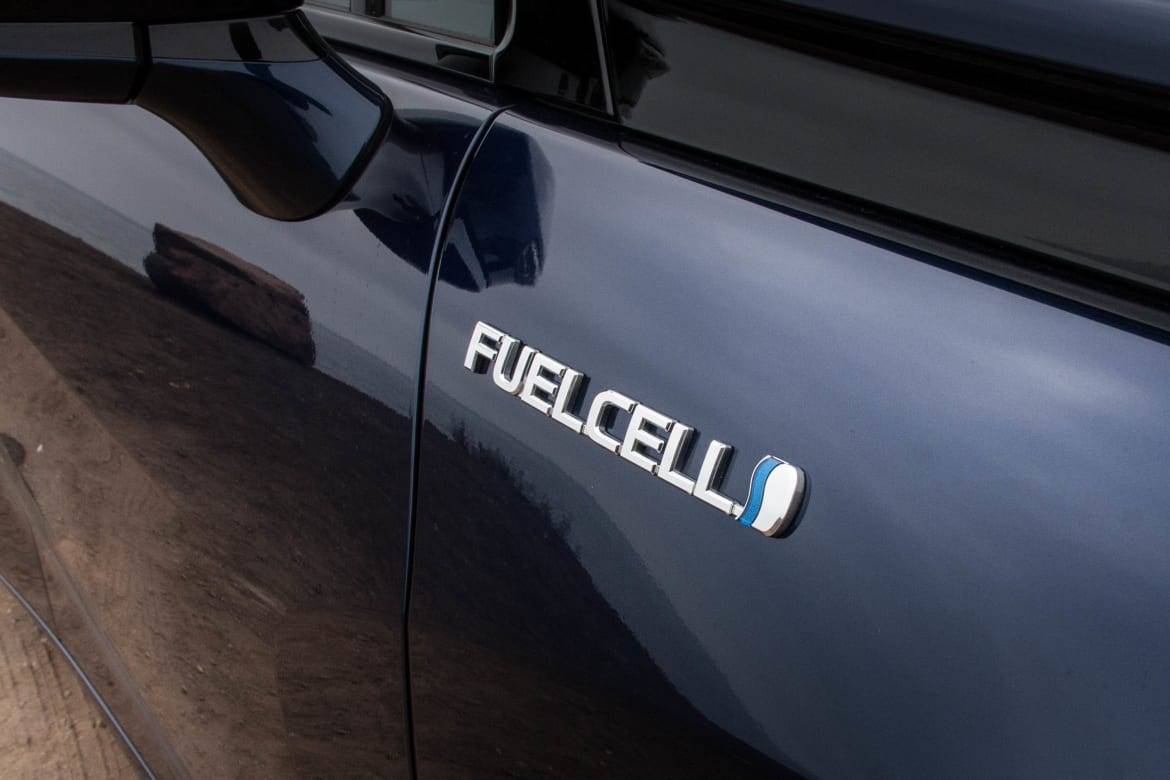Fill 'er Up: Refueling the 2016 Toyota Mirai


CARS.COM — I recently had the chance to test a 2016 Toyota Mirai to see how the hydrogen-powered fuel-cell vehicle fared on the road and at the filling station. Saeed Rezvani, Fuel Cell Infrastructure Analyst with Toyota, gave me a tutorial on the hydrogen refueling process and — as you might expect — it’s a little more complicated than filling up your vehicle at a regular gas station.
Related: 10 Things to Know About the 2016 Toyota Mirai
In California, the only state that currently has hydrogen infrastructure setup, there is a helpful website that not only shows where hydrogen stations are but their pump statuses as well. So before you go, you’ll know which pumps are working and how much fill you can get at different locations.
At most hydrogen stations, there are two types of hydrogen pumps — H35 and H70. H35 pumps are able to fill the tanks to 5,000 pounds per square inch, which is half of the Mirai’s capacity. H70 pumps are double the pressure and will fill the tanks all the way, up to 10,000 psi. This means that if you’re empty and only an H35 pump is available, you’ll only be able to refill halfway, but if you have more than half a tank, an H35 pump won’t help you at all.

The pump attaches to a metal spigot (or receptacle, as Toyota calls it) that runs to the hydrogen tanks. On an H35 pump, there’s a lever you turn to secure it. H70 pumps have a trigger that’s similar to what you’d see on a gasoline pump, but instead of starting the flow of hydrogen fuel, it locks the pump onto the spout to make sure it’s secure.
Rezvani suggested that after you think the pump is attached, give it a tug to be sure it’s on tight. It seemed like overkill to me until he told me a story about a time he forgot to double-check the fastening of the pump and it actually shot off the Mirai. So yes, double-check. Every time.

After that, it’s pretty straightforward: Hit a button and the tanks start to refill with hydrogen fuel. While fueling, the area around the pump can get very cold, so it’s not uncommon to see condensation or frost on the pump or the spigot. The station lets you know when the tank is full via a beep and a message on the screen. You may also hear some of the excess hydrogen from the fueling process vented out of the top of the station. Once done, you pull up on a latch to release the handle, release the clamp and replace the nozzle. Toyota’s video explaining this process can be seen here.
Our fill-up from one-quarter tank to full took about 6 minutes, 30 seconds, so a bit longer than filling up with gas but not prohibitively long. Still, it’s much faster than even the quickest chargers for electric cars, Tesla’s supercharger, which takes 30 minutes to charge up to 80 percent of its battery.

Hydrogen gas is sold by the kilogram instead of the gallon and at the station we used to fill the Mirai in La Canada, Calif., it was $16.63 per kilogram. The Mirai was three-quarters empty at that point and the tanks hold around 5 kilograms of hydrogen, so it took 3.81 kilograms to fill back it up at a cost of $63.51. The trip meter read 195.3 miles at that point. That put the cost per mile at around $0.33. This is still much higher than the cost of fuel for a gasoline vehicle; the EPA estimates the cost per mile of a 2016 Prius to be $0.04 per mile.
Toyota’s hydrogen-related expansion plans are ambitious. Currently, the Mirai is only being sold in California, where hydrogen stations are available in the San Francisco Bay Area and Los Angeles and Orange County areas. This map on the automaker’s website shows a planned expansion of the hydrogen station network, which will add five new stations by the end of 2016 just in Southern California.
According to Rezvani, Toyota also has its sights set on the Northeast, where it is planning to open 12 hydrogen stations by mid-to-late 2017 clustered around New York City and Boston; sales of the Mirai in those states will start soon after. As the number of hydrogen stations grows and the fuel becomes more readily available, the viability of the Mirai and fuel-cell vehicles in general should grow in lockstep.


Former L.A. Bureau Chief Brian Wong is a California native with a soft spot for convertibles and free parking.
Featured stories




